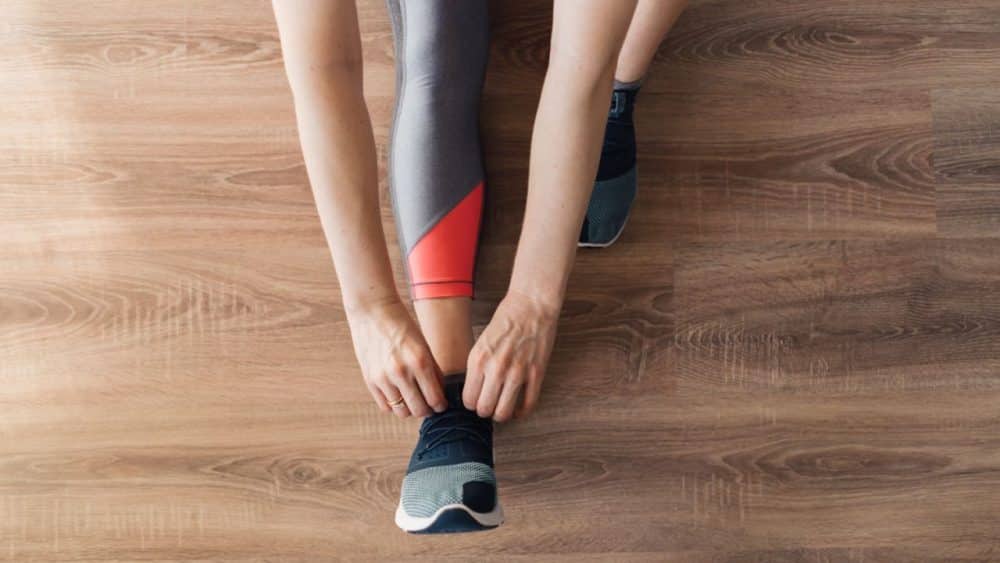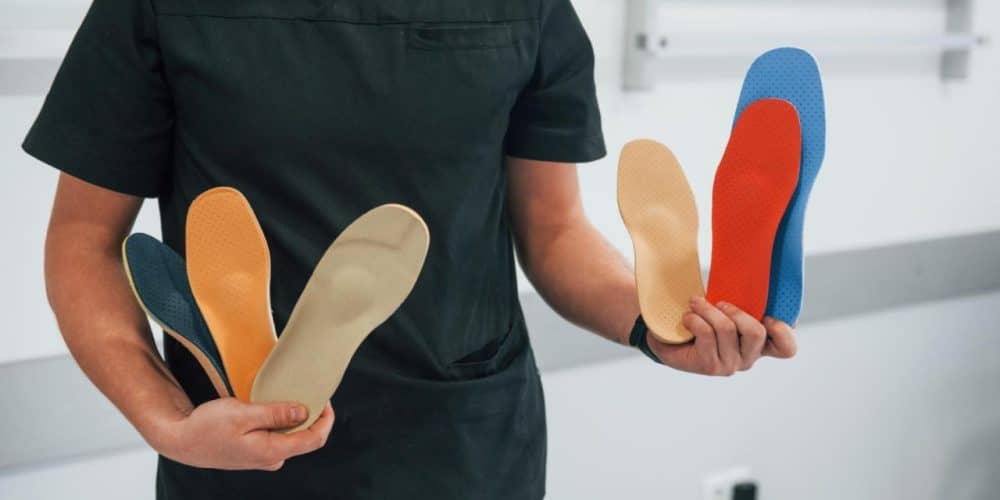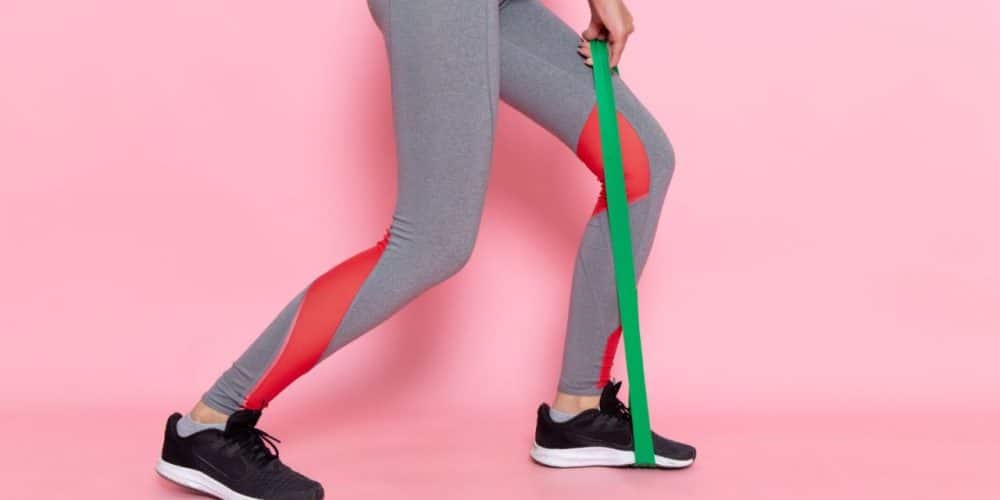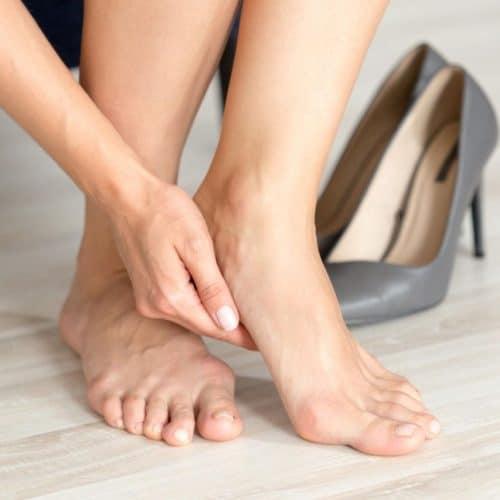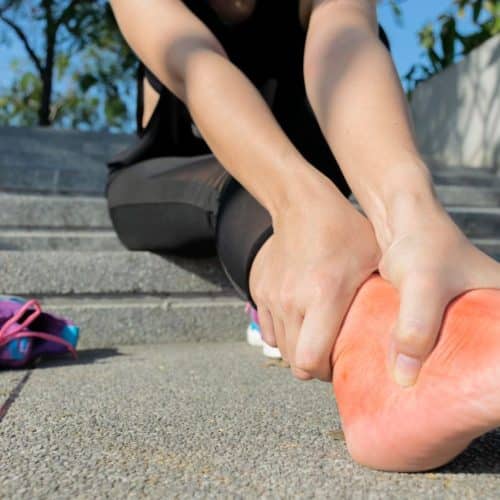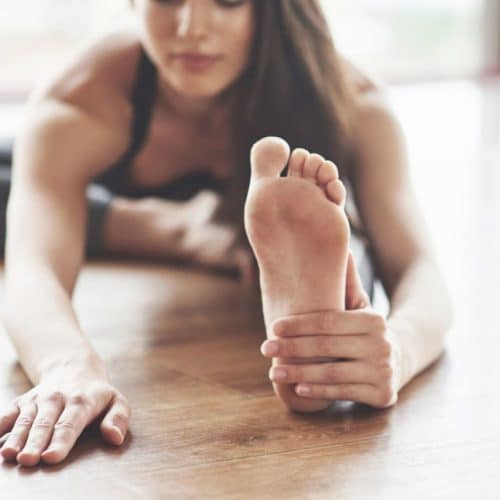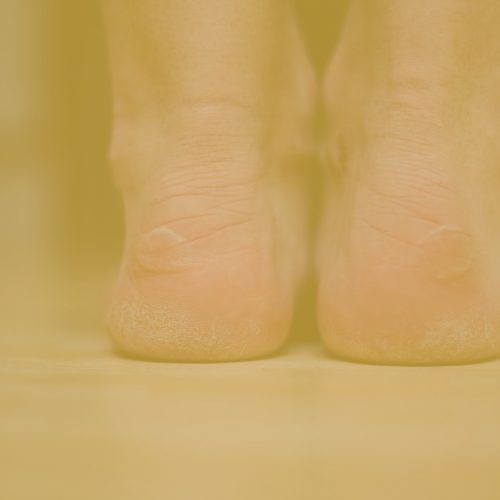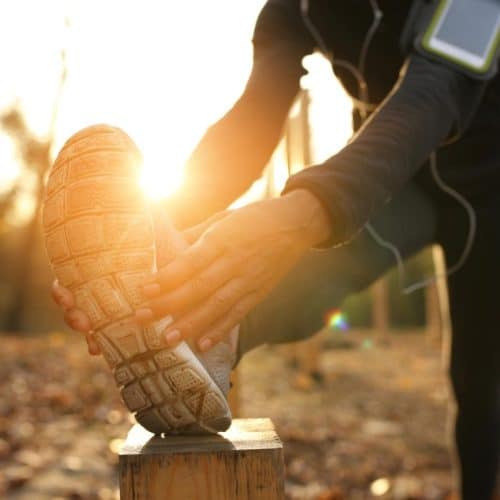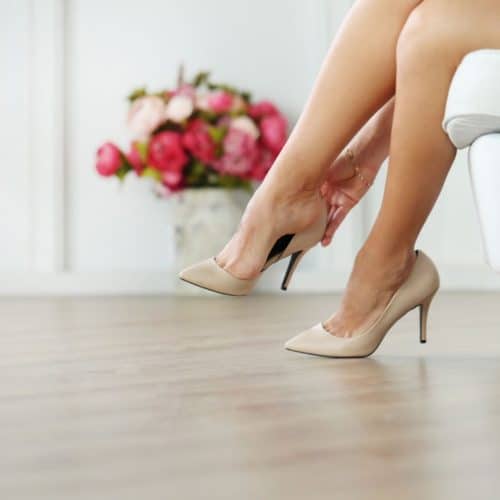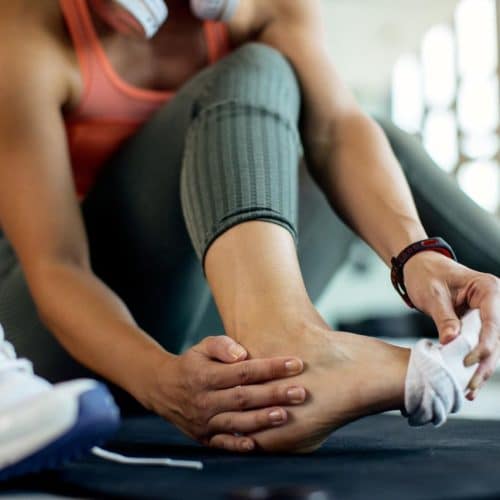Are you a passionate runner pounding the pavement day in and day out? Do you often wonder if running orthotics could enhance your performance and prevent potential injuries? The pivotal question arises: Should you get running orthotics? In achieving your running goals, understanding the role of orthotics can be a game-changer.
Understanding Running Orthotics
Running orthotics, often referred to as shoe inserts or insoles, are specialised devices designed to provide additional support and alignment to your feet while engaging in physical activities like running. These orthotics can be tailored to address specific biomechanical issues unique to each individual.
1. The Biomechanics of Running
Before delving into the details of running orthotics, it’s important to understand the biomechanics of running. When you run, your feet undergo complex motions involving impact, weight distribution, and propulsion. Biomechanical imbalances, such as overpronation (when your foot rolls too far inward) or underpronation (when your foot doesn’t roll enough), can lead to discomfort and even injuries over time.
2. The Role of Running Orthotics
Running orthotics are designed to correct these biomechanical imbalances by providing targeted support to different areas of the foot. They can help align the foot and ankle in a neutral position, allowing for a more efficient and comfortable stride. By promoting a more natural gait, orthotics can reduce the strain on muscles, tendons, and ligaments, minimising the risk of overuse injuries.
3. Customised Support
One of the remarkable aspects of modern running orthotics is their ability to be customised. Unlike generic shoe inserts, which offer a basic level of cushioning, custom orthotics are tailored to your feet’ unique shape and needs. This personalisation is achieved through technologies like 3D scanning and gait analysis, which provide podiatrists with precise data to create orthotics that fit like a glove.
4. Enhanced Cushioning and Shock Absorption
Running puts significant stress on your feet, especially during high-impact activities. Running orthotics often incorporate advanced materials that offer enhanced cushioning and shock absorption. This means that the force generated with each step is better distributed across the foot, reducing the impact on vulnerable areas and promoting a smoother running experience.
5. Addressing Specific Conditions
Running orthotics can address a range of specific conditions that runners commonly face. For instance, if you have flat feet, orthotics can provide the arch support lacking in your natural foot structure. Similarly, orthotics can help distribute weight more evenly if you have high arches. Conditions like plantar fasciitis, which involves inflammation of the tissue on the sole, can also benefit from the additional support and cushioning that orthotics provide.
6. An Investment in Long-Term Foot Health
While the immediate benefits of running orthotics are clear, viewing them as an investment in your long-term foot health is important. By addressing biomechanical imbalances and reducing the risk of injuries, orthotics can allow you to continue enjoying the sport you love without discomfort.
Running orthotics are a tool that can enhance your running experience by promoting proper alignment, reducing strain, and minimising the risk of injuries. While they might not be necessary for everyone, they can be a game-changer for individuals who experience discomfort or want to optimise their performance. If you’re considering running orthotics, it’s recommended to consult a podiatrist who can assess your unique needs and recommend the best course of action for your foot health.
Benefits of Running Orthotics
Running orthotics offer a range of valuable benefits that can significantly enhance your running experience and overall foot health. Whether you’re a seasoned runner or just starting out on your fitness journey, understanding these benefits can help you make an informed decision about incorporating orthotics into your routine.
1. Improved Foot Stability
One of the primary functions of running orthotics is to promote proper foot alignment. They can help correct biomechanical issues such as overpronation or underpronation, leading to improper weight distribution and potential injuries. By stabilising your feet and encouraging a more neutral gait, orthotics reduce the strain on various muscles, tendons, and ligaments, contributing to a more stable and efficient running stride.
2. Reduced Risk of Injuries
Running-related injuries are all too common, especially when improper form or inadequate support is involved. Running orthotics act as a preventive measure by aligning your feet and reducing the likelihood of overuse injuries. Conditions like plantar fasciitis, Achilles tendonitis, and shin splints often stem from biomechanical imbalances, which orthotics can help address.
3. Enhanced Performance
When your feet are properly supported and aligned, your running form improves, and you can make the most of each stride. With reduced strain and improved stability, you’re likely to experience enhanced performance and greater efficiency in your runs. Whether aiming for faster times or longer distances, running orthotics can contribute to reaching your goals.
4. Versatility in Footwear
Running orthotics are not limited to your running shoes alone. Many orthotics are designed to be easily transferable between different types of footwear, such as athletic shoes, casual sneakers, and even certain types of dress shoes. This means you can enjoy the benefits of orthotic support in various aspects of your daily life.
Running orthotics offer a multitude of benefits that can make a significant difference in your running journey. From enhanced cushioning and stability to reduced injury risk and improved performance, these specialised shoe inserts have the potential to enhance your overall foot health and running experience.
Types of Running Orthotics
When it comes to running orthotics, there’s no one-size-fits-all solution. Different individuals have varying foot structures, biomechanics, and needs. As a result, running orthotics come in different types, each designed to address specific concerns and provide tailored support. Understanding these types can help you make an informed decision about which orthotics are best suited for you.
1. Cushioned Orthotics
Cushioned orthotics, or shock-absorbing orthotics, prioritise providing extra cushioning and support to your feet. These orthotics are particularly beneficial for runners who experience discomfort or fatigue due to high-impact activities. Cushioned orthotics absorb the shock generated with each step, reducing the strain on your feet and promoting a more comfortable running experience.
2. Corrective Orthotics
Corrective orthotics are designed to address specific biomechanical issues affecting your gait. Corrective orthotics aim to align your foot and ankle in a more neutral position, whether you overpronate (your foot rolls excessively inward) or underpronate (your foot doesn’t roll enough). Doing so helps promote a more natural and efficient running stride, reducing the risk of injuries caused by improper alignment.
3. Supportive Orthotics
Supportive orthotics focus on providing additional support to specific areas of the foot. For instance, supportive orthotics can help compensate for these structural differences if you have too high or flat arches. These orthotics can improve weight distribution, reduce ligament strain, and contribute to a more stable and comfortable running experience by offering targeted support.
4. Functional Orthotics
Functional orthotics are designed to address foot issues and the alignment of your lower limbs. They consider how your feet interact with your ankles, knees, and hips. By promoting proper alignment from the ground up, functional orthotics can help prevent injuries that might stem from misalignment higher up in the kinetic chain.
5. Custom-Made Orthotics
Custom-made orthotics are personalised to your unique foot structure and needs. They are typically crafted based on data gathered from 3D scans of your feet and a thorough gait analysis. Custom orthotics offer the highest level of individualised support, tailored precisely to address your biomechanical concerns.
6. Semi-Custom Orthotics
Semi-custom orthotics offer a middle ground between generic shoe inserts and fully custom orthotics. These orthotics are often available in different sizes and arch shapes to cater to a broader range of individuals. While they may not offer the same level of precision as fully custom orthotics, they can still support many runners effectively.
7. Off-the-Shelf Orthotics
Off-the-shelf orthotics are pre-made inserts that are available in various sizes and designs. They are a convenient option for runners who want to try orthotics without the commitment of custom-made ones. While they may provide a different level of tailored support, they can still offer general cushioning and comfort.
Do You Really Need Running Orthotics?
Running orthotics pose a significant consideration for runners seeking enhanced comfort and performance. Incorporating running orthotics into your routine hinges on various factors, including your running style, foot type, and any discomfort.
If you’re experiencing recurring pain during or after runs, it might indicate that your natural biomechanics are causing strain. Running orthotics can correct these biomechanical imbalances, potentially alleviating discomfort and reducing the risk of injuries. Conditions such as plantar fasciitis, shin splints, and Achilles tendonitis can often be linked to improper foot alignment. Orthotics can provide the necessary support to help prevent such issues from escalating.
However, it’s important to note that not all runners require orthotics. If you’re a casual runner who doesn’t experience discomfort and your running gait is relatively balanced, running orthotics might not be necessary for you. Some runners possess the natural biomechanics and foot structure to comfortably withstand the demands of running without additional support.
Consulting a podiatrist is essential before running orthotics. These professionals can assess your feet, analyse your gait, and advise on whether orthotics could benefit you. They can help you understand the root causes of any discomfort you’re experiencing and whether orthotics are a suitable solution.
It’s important to consider running orthotics as a potential aid rather than a definitive answer. These factors should also be addressed if your discomfort is linked to improper running form, inadequate footwear, or lack of conditioning. Orthotics can complement other measures, such as strengthening exercises and proper warm-up routines, to ensure holistic foot health.
Ultimately, the choice to invest in running orthotics is a personal one. By seeking professional guidance and understanding your running mechanics, you can determine whether running orthotics are valuable to your running toolkit. It’s about striking a balance between enjoying your runs and taking the necessary steps to ensure the longevity of your foot health.
Consultation with a Podiatrist
When considering incorporating running orthotics into your routine, seeking a consultation with a podiatrist is crucial. Their expertise can provide you with valuable insights and guidance to make an informed decision about whether running orthotics are right for you. Here are some key points to consider during your consultation:
- Gait Analysis: A podiatrist will assess your running gait to identify any irregularities or biomechanical imbalances contributing to discomfort or potential injuries. This analysis involves observing how your feet and lower limbs move during the running motion.
- Foot Examination: Through a comprehensive examination of your feet, a podiatrist will evaluate your foot structure, arch height, and any existing conditions such as bunions, hammertoes, or flat feet. This information is vital in determining the appropriate type of orthotic support.
- Discussion of Symptoms: Communicate any pain, discomfort, or issues you experience during or after running. This information helps the podiatrist pinpoint areas that might benefit from orthotic intervention.
- Medical History: Providing your medical history, including previous injuries or chronic conditions, will enable the podiatrist to consider all relevant factors that could impact the effectiveness of running orthotics.
- Individual Needs: A podiatrist will consider your needs and goals as a runner. Whether you’re a casual jogger or a competitive athlete, the required support level might vary.
- Customisation: If custom orthotics are recommended, the podiatrist will explain the customisation process, which often involves using 3D scans or moulds of your feet. They’ll discuss how the orthotics will be tailored to address your specific concerns.
- Fitting and Adjustment: If you proceed with orthotics, the podiatrist will guide you through the fitting process. They will ensure the orthotics fit comfortably in your shoes and provide the necessary support.
- Educational Guidance: A consultation with a podiatrist is also an opportunity to educate yourself about proper foot care, running mechanics, and preventive measures to reduce the risk of injuries.
- Alternative Recommendations: If running orthotics aren’t deemed necessary for your case, the podiatrist might suggest alternative measures such as footwear recommendations, exercises, or stretches to address your concerns.
- Long-Term Benefits: The podiatrist will outline the potential long-term benefits of running orthotics, including enhanced comfort, improved performance, and reduced injury risk.
- Follow-Up: Depending on your progress and any adjustments needed, the podiatrist might recommend follow-up appointments to ensure that the orthotics effectively address your concerns.
A consultation with a podiatrist is essential in determining whether running orthotics are a suitable addition to your running routine. Their expertise will provide personalised insights and recommendations based on your unique needs and goals. Whether you’re a novice runner or a seasoned athlete, the guidance of a podiatrist can contribute to a more comfortable, efficient, and injury-free running experience.
Incorporating Orthotics into Your Routine
Integrating running orthotics into your routine requires a thoughtful approach to ensure a seamless transition and maximum benefit. Here are some key considerations and steps to take when incorporating orthotics into your running regimen:
- Start Gradually: Begin by wearing your orthotics during shorter runs or walks. This gradual approach allows your feet and body to adapt to the new support without overwhelming them.
- Listen to Your Body: How your body responds to the orthotics. It’s normal to experience a period of adjustment as your muscles and joints adapt to the new alignment.
- Shorter Distances: For the initial phase, stick to shorter distances to minimise the risk of discomfort. As your body becomes accustomed to the orthotics, gradually increase the distance and intensity of your runs.
- Alternate Shoes: If you have multiple pairs of running shoes, rotate the use of orthotics among them. This prevents excessive wear on a single pair of orthotics and provides consistent support across your shoe collection.
- Warm-Up and Cool-Down: Incorporate proper warm-up and cool-down routines into your running sessions. Stretching and gentle exercises can help prepare your muscles and joints for the run and prevent post-run stiffness.
- Consult Your Podiatrist: If you experience persistent discomfort or unusual sensations while using the orthotics, consult your podiatrist. They can provide guidance and make necessary adjustments to ensure the orthotics are aligned with your needs.
- Footwear Consideration: Ensure that your running shoes are compatible with the orthotics. Shoes with removable insoles are often the best choice, as they provide enough space for the orthotics without compromising the fit.
- Feedback and Adjustments: During the initial period of using orthotics, note how they impact your running experience. If you notice areas of discomfort or improvement, share this feedback with your podiatrist during follow-up appointments.
- Stay Consistent: Consistency is key when incorporating orthotics. Wear them consistently during runs and other physical activities that might benefit from the additional support.
- Regular Check-ins: Schedule periodic appointments with your podiatrist to assess your progress and make any necessary adjustments to the orthotics. These appointments can ensure that you’re maximising the benefits of the orthotics over time.
- Foot Strengthening: While orthotics provide support, it’s important to maintain foot strength through targeted exercises. Consult your podiatrist for exercises that can complement the use of orthotics.
Incorporating running orthotics into your routine requires patience and a strategic approach. By gradually introducing the orthotics, listening to your body, and staying consistent, you can optimise the benefits of their support. Consulting a podiatrist throughout the process ensures that the orthotics align with your needs and contribute to a comfortable and rewarding running experience.
Addressing Common Concerns
Running orthotics often raise questions and concerns among runners, ranging from how they affect natural stride to the potential dependency on support. Let’s address some of these common concerns and provide insights to help you make an informed decision about incorporating orthotics into your running routine.
1. Preserving Natural Stride
A common worry is that running orthotics might alter your natural stride. However, well-designed orthotics are intended to enhance your natural gait rather than hinder it. They promote proper alignment, helping you achieve a more efficient and comfortable stride.
2. Dependency on Support
Concerns about becoming reliant on orthotic support are valid. However, it’s important to note that orthotics aim to address biomechanical imbalances and discomfort, not create dependency. Many runners find that orthotics help them address issues and eventually allow them to run more comfortably without constant reliance on support.
3. Transition Period
Some runners worry about an uncomfortable transition period when introducing orthotics. Your body needs time to adjust to the new support, but discomfort should be temporary. Gradually incorporating orthotics into your routine and following a proper transition plan can minimise initial discomfort.
4. Fit in Different Shoes
A concern for runners is whether orthotics will fit in various running shoes. Orthotics designed for running are often versatile and compatible with different footwear styles. However, it’s essential to ensure that your shoes have enough space to accommodate the orthotics comfortably.
5. Impact on Performance
Runners might wonder if orthotics will impact their running performance. In most cases, well-fitted orthotics enhance performance by promoting proper alignment and reducing the risk of discomfort or injuries. Improved alignment can lead to more efficient running mechanics and better performance.
6. Engaging Foot Muscles
A concern is that using orthotics might prevent foot muscles from engaging. While orthotics provide external support, they can complement foot strength exercises. Integrating foot-strengthening routines alongside orthotics can help maintain muscle engagement and balance.
7. One Solution Fits All
There’s a misconception that a single type of orthotic suits all runners. In reality, orthotics are customisable to individual needs. Whether you require cushioning, correction, or support depends on foot structure and running style.
8. Immediate Results
It’s important to manage expectations regarding immediate results. While some runners experience immediate relief, others might require a gradual adjustment period. Give your body time to adapt to the new support before assessing the full impact.
9. Long-Term Cost vs. Benefit
Investing in quality orthotics can raise concerns about long-term costs. However, viewing orthotics as an investment in foot health and running experience can help justify the expense. Orthotics can offer long-term benefits compared to potential medical bills resulting from untreated injuries.
10. Expert Guidance
Addressing concerns is best achieved through expert guidance. Consult a podiatrist to address your questions and ensure that orthotics are the right solution for your unique needs.
Addressing common concerns about running orthotics can provide clarity and confidence in decision-making. Recognise that orthotics are designed to enhance your running experience and address discomfort rather than hinder your natural mechanics.
Conclusion
In conclusion, investing in running orthotics should not be taken lightly. As avid runners, we understand the importance of enhancing our performance and preventing injuries. Running orthotics offers a potential solution to various biomechanical issues affecting runners of all levels.
From providing additional support and stability to correcting gait abnormalities, running orthotics can positively impact your running experience. By aligning your feet and ankles properly, these orthotics aim to minimise the stress on your joints and muscles, potentially reducing the risk of common running-related injuries such as plantar fasciitis, shin splints, and IT band syndrome.
However, it’s crucial to recognise that running orthotics are not a one-size-fits-all solution. Before deciding to get running orthotics, it’s recommended to consult with a podiatrist or a sports medicine specialist. A professional assessment can determine whether you require orthotics and guide you toward choosing the right type.
Moreover, while running orthotics can provide valuable support, they are just one piece of the puzzle. Proper running form, suitable footwear, a balanced training regimen, and adequate recovery are all vital components of a successful and injury-free running journey.
Now, let’s turn the focus to you. Have you ever considered getting a professional analysis of your running gait? Understanding how your feet interact with the ground can unlock insights into potential issues that might benefit from running orthotics. Take a moment to reflect: Have you experienced recurring discomfort or injuries while running? Is your gait contributing to these problems? Share your thoughts and experiences – we’d love to hear from you!
Remember, the path to becoming a stronger and healthier runner involves seeking the right tools and interventions and gaining knowledge about your body’s mechanics. So, whether or not you decide to invest in running orthotics, taking the time to explore and improve your running form can undoubtedly contribute to a more enjoyable and enduring running journey.
Content Summary
- In achieving your running goals, understanding the role of orthotics can be a game-changer.
- Running orthotics, those specialised insoles designed to provide support and alignment to your feet, have gained attention as potential aids in optimising running mechanics.
- Factors like your running style, foot structure, and existing biomechanics play a pivotal role in determining whether they will benefit you.
- Before delving into the details of running orthotics, it’s important to understand the biomechanics of running.
- Unlike generic shoe inserts, which offer a basic level of cushioning, custom orthotics are tailored to your feet’ unique shape and needs.
- While the immediate benefits of running orthotics are clear, viewing them as an investment in your long-term foot health is important.
- Running orthotics are a tool that can enhance your running experience by promoting proper alignment, reducing strain, and minimising the risk of injuries.
- If you’re considering running orthotics, it’s recommended to consult a podiatrist who can assess your unique needs and recommend the best course of action for your foot health.
- Running orthotics offer a range of valuable benefits that can significantly enhance your running experience and overall foot health.
- One of the primary functions of running orthotics is to promote proper foot alignment.
- Running orthotics are not limited to your running shoes alone.
- Running orthotics offer a multitude of benefits that can make a significant difference in your running journey.
- From enhanced cushioning and stability to reduced injury risk and improved performance, these specialised shoe inserts have the potential to enhance your overall foot health and running experience.
- Supportive orthotics focus on providing additional support to specific areas of the foot.
- Functional orthotics are designed to address foot issues and the alignment of your lower limbs.
- Custom-made orthotics are personalised to your unique foot structure and needs.
- Semi-custom orthotics offer a middle ground between generic shoe inserts and fully custom orthotics.
- Consulting a podiatrist is essential before running orthotics.
- Ultimately, the choice to invest in running orthotics is a personal one.
- By seeking professional guidance and understanding your running mechanics, you can determine whether running orthotics are valuable to your running toolkit.
- When considering incorporating running orthotics into your routine, seeking a consultation with a podiatrist is a crucial step.
- A podiatrist will assess your running gait to identify any irregularities or biomechanical imbalances contributing to discomfort or potential injuries.
- Through a comprehensive examination of your feet, a podiatrist will evaluate your foot structure, arch height, and any existing conditions such as bunions, hammertoes, or flat feet.
- This information is vital in determining the appropriate type of orthotic support.
- A podiatrist will consider your needs and goals as a runner.
- A consultation with a podiatrist is essential in determining whether running orthotics are a suitable addition to your running routine.
- Begin by wearing your orthotics during shorter runs or walks.
- As your body becomes accustomed to the orthotics, gradually increase the distance and intensity of your runs.
- If you experience persistent discomfort or unusual sensations while using the orthotics, consult your podiatrist.
- Ensure that your running shoes are compatible with the orthotics.
- Schedule periodic appointments with your podiatrist to assess your progress and make any necessary adjustments to the orthotics.
- Running orthotics often raise questions and concerns among runners, ranging from how they affect natural stride to the potential dependency on support.
- A common worry is that running orthotics might alter your natural stride.
- However, well-designed orthotics are intended to enhance your natural gait rather than hinder it.
- Concerns about becoming reliant on orthotic support are valid.
- Some runners worry about an uncomfortable transition period when introducing orthotics.
- Gradually incorporating orthotics into your routine and following a proper transition plan can minimise initial discomfort.
- However, it’s essential to ensure that your shoes have enough space to accommodate the orthotics comfortably.
- In most cases, well-fitted orthotics enhance performance by promoting proper alignment and reducing the risk of discomfort or injuries.
- Investing in quality orthotics can raise concerns about long-term costs.
- However, viewing orthotics as an investment in foot health and running experience can help justify the expense.
- Orthotics can offer long-term benefits compared to potential medical bills resulting from untreated injuries.
- Addressing concerns is best achieved through expert guidance.
- Consult a podiatrist to address your questions and ensure that orthotics are the right solution for your unique needs.
- Addressing common concerns about running orthotics can provide clarity and confidence in decision-making.
- Recognise that orthotics are designed to enhance your running experience and address discomfort rather than hinder your natural mechanics.
- In conclusion, investing in running orthotics should not be taken lightly.
- Running orthotics offers a potential solution to various biomechanical issues affecting runners of all levels.
- From providing additional support and stability to correcting gait abnormalities, running orthotics can positively impact your running experience.
- However, it’s crucial to recognise that running orthotics are not a one-size-fits-all solution.
- Before deciding to get running orthotics, it’s recommended to consult with a podiatrist or a sports medicine specialist.
- A professional assessment can determine whether you require orthotics and guide you toward choosing the right type.
- So, whether or not you decide to invest in running orthotics, taking the time to explore and improve your running form can undoubtedly contribute to a more enjoyable and enduring running journey.
FAQs
1. Are running orthotics only for professional athletes?
No, running orthotics can benefit both professional athletes and casual runners by providing necessary foot support.
2. Can I use the same orthotics for different types of shoes?
It’s recommended to have separate orthotics for different shoe types to ensure proper fit and support.
3. Do orthotics cure existing running injuries?
Orthotics can aid in preventing and alleviating certain injuries, but they may not serve as a sole cure. Consult a healthcare practitioner for personalised advice.
4. How often should I replace my running orthotics?
On average, running orthotics should be replaced every 1-2 years, depending on usage and wear.
5. Can I continue using orthotics if I feel discomfort?
In the initial days of using orthotics, discomfort is normal as your feet adjust. However, if discomfort persists, consult your podiatrist for adjustments or alternatives.


